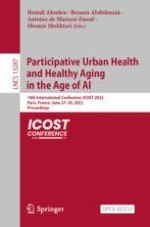1 Introduction
2 Literature Review
3 Pattern Specification
3.1 Contexts and Machines Relationships
3.2 Structural Features
 \(Object\) \(\wedge \) \(Component\)
\(Object\) \(\wedge \) \(Component\)
 \(Object\) = \(\emptyset \)). This is specified by using a partition in the
\(Object\) = \(\emptyset \)). This is specified by using a partition in the AXIOMS clause (\(Entity\_partition\)). CONSTANTS clause. Formally, we specify {C\(_{1}\),...,C\(_{n}\)} \(\in \) Component \(\wedge \) C\(_{1}\) \(\ne \) C\(_{2}\) \(\wedge \)...\(\wedge \) C\(_{n-1}\) \(\ne \) C\(_{n}\).CONSTANTS clause. The set of Connectors is composed of all Connectors name. This is specified formally with a partition (\(Connector\_partition\)). SETS clause. Messages name M\(_i\) are specified in the CONSTANTS clause. They are attributed with their type with a partition in the AXIOMS clause (\(Message\_partition\)). 3.3 Behavioral Features
 \(\{O_{i}\) \(\mapsto \) \(M_{i}\) \(\}\). That is, object \(O_{i}\) processes message \(M_{i}\).
\(\{O_{i}\) \(\mapsto \) \(M_{i}\) \(\}\). That is, object \(O_{i}\) processes message \(M_{i}\).
3.4 Formal Verification
INVARIANTS, AXIOMS, THEOREMS) or with guards in the events. It is also ensured by proof obligations generated by the Rodin platform. They define what is to be proved to ensure the consistency of an Event-B pattern model. As example of consistency constraints, we check that no entity can send a message if it is not authorised. This is controlled by an invariant called Can_Send_INV. For sequence diagrams, we require that every message must start activation. 